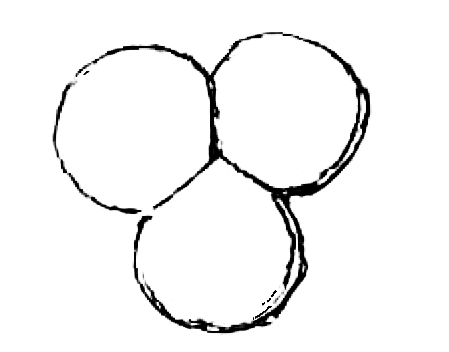From George Robert Waterhouse 14 April 1857
British Museum
April 14. 57
My dear Darwin
I have had scarcely any time at my command during the last two or three days—that is to say, whilst in the Museum, the only time that I could get to see one of the books referred to by you— I have now looked into them & find nothing connected with bee’s cells in either paper— one of the papers—on the habits of Osmia atricapilla—threatens to give, upon a future occasion, an account of the mode of constructing the cell of the insect and some other bees, but I cannot find that it was done—certainly not in the same book.1
Faithfully Yours Geo R Waterhouse
I have always laboured under the impression that I did publish an account of the Osmia atricapilla, & that in the account I alluded to the structure of the cell, but now that I have found a paper on the insect with the cell question being disputed, I strongly suspect that I have never done it— I think I have told about the cell of this bee (Osmia atricapilla)—a little oval mud cell, with the inner side smooth & the outer side rough, & with a lid, the exact counterpart of the first commencement of the cell—rough on the inner side & with a smooth concavity at the top or outer side— the insect worked out the inner side & smoothed it with her jaws—
At the last meeting of the Entomological Society there was some discussion upon the subject of the Hive-bee’s cell—introduced by Mr Westwood from whose brief observations upon the subject I conclude that his views are the same as mine—2 I was made to say something, & in that say I alluded to a small piece of a Hornet’s comb which I possess & which is composed of three cells only—presenting a section like this—
 Mr. Tegetmier said he had got a small piece of honey-comb like it—i.e with cells cylindrical externally & with two straight sides where they came in contact with the other cells—& that he would exhibit the same on a future occasion.3
Mr. Tegetmier said he had got a small piece of honey-comb like it—i.e with cells cylindrical externally & with two straight sides where they came in contact with the other cells—& that he would exhibit the same on a future occasion.3
Footnotes
Bibliography
Natural selection: Charles Darwin’s Natural selection: being the second part of his big species book written from 1856 to 1858. Edited by R. C. Stauffer. Cambridge: Cambridge University Press. 1975.
Origin: On the origin of species by means of natural selection, or the preservation of favoured races in the struggle for life. By Charles Darwin. London: John Murray. 1859.
Richardson, Edmund William. 1916. A veteran naturalist; being the life and work of W. B. Tegetmeier. London: Witherby & Co.
Summary
Has found no reference to construction of bees’ cells in works referred to by CD. Describes cell of Osmia atricapilla. Hive-bees’ cell was described at Entomological Society.
Letter details
- Letter no.
- DCP-LETT-2078
- From
- George Robert Waterhouse
- To
- Charles Robert Darwin
- Sent from
- British Museum
- Source of text
- DAR 181: 21
- Physical description
- ALS 3pp †
Please cite as
Darwin Correspondence Project, “Letter no. 2078,” accessed on 16 April 2024, https://www.darwinproject.ac.uk/letter/?docId=letters/DCP-LETT-2078.xml
Also published in The Correspondence of Charles Darwin, vol. 6


